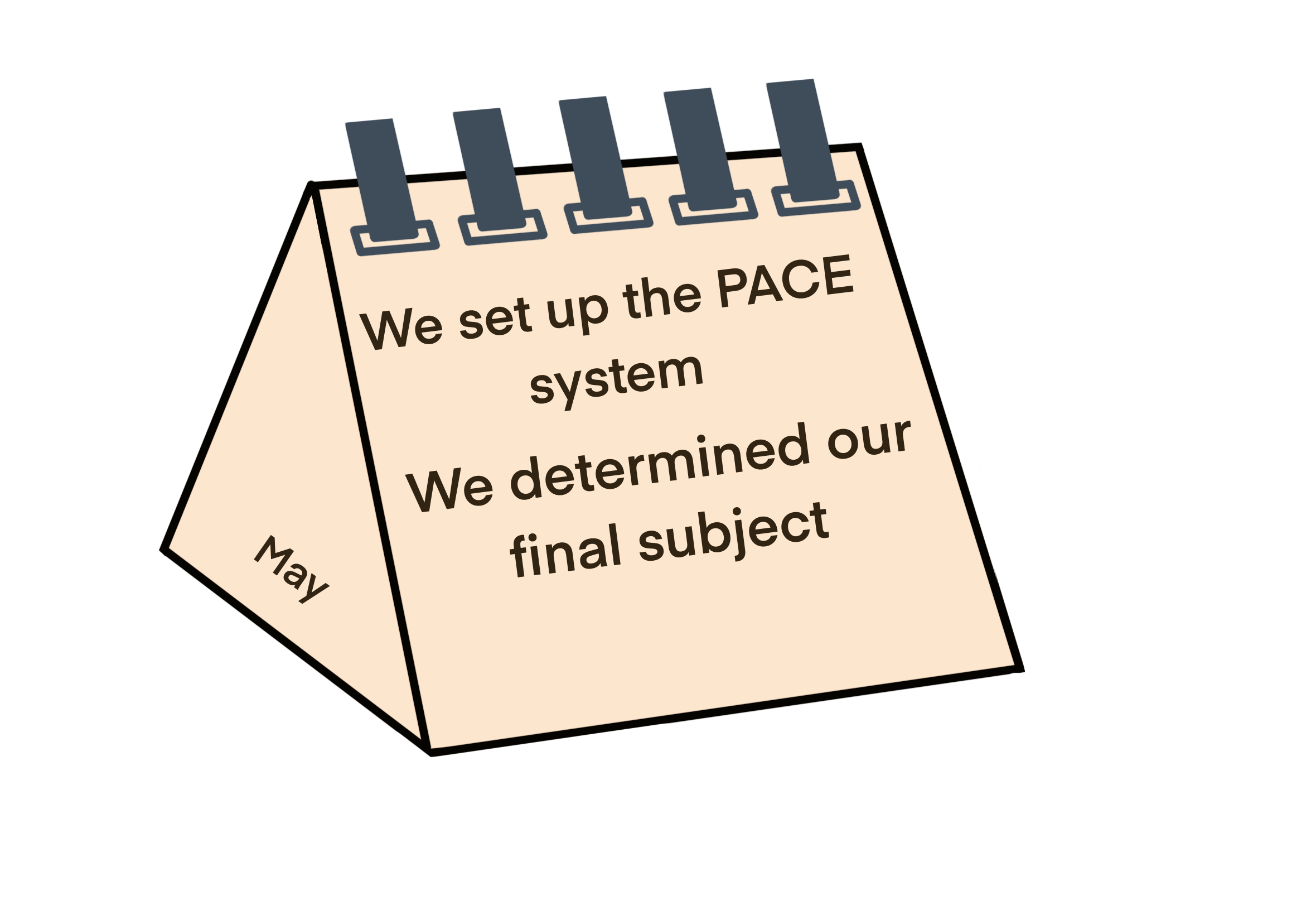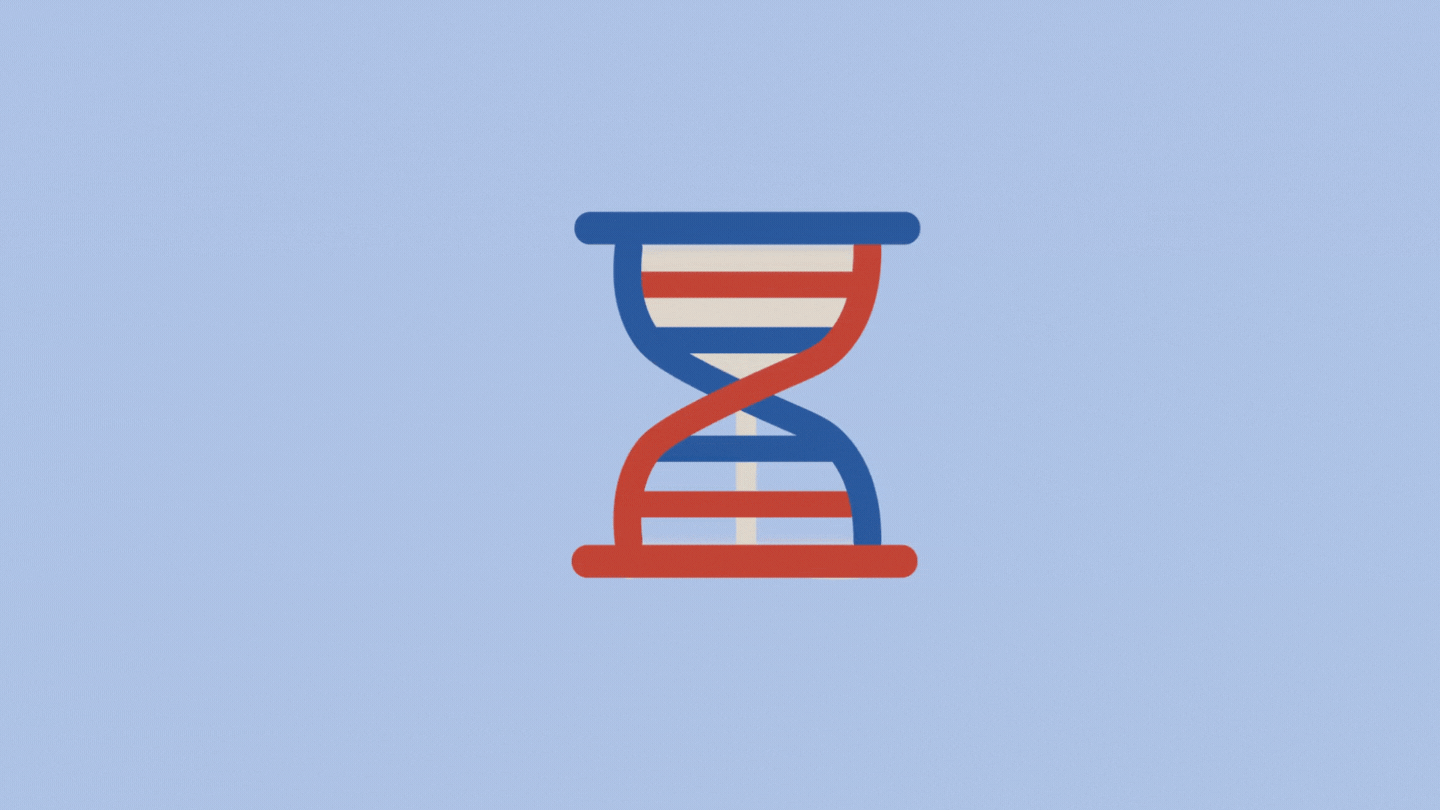BACK👈


| Date | Member | Experiment | Result |
|---|---|---|---|
| 2022/5/1 | Y.R. | Pick DH5α single colonies into the liquid media in the test tubes and put them in the biological shaker. | |
| C.Q.Y. | Validate 5 blue bulges and 1 grey bulge on the plate through PCR. | The blue bulges were wild-type phage while the PCR products of grey bulge produced 2 strips. | |
| 2022/5/2 | Y.R. | (1) Make 2×TSS solution;
(2) Make 35 tubes of DH5α competent cells. |
|
| C.Q.Y. | Combinate the sections previously used for Golden Gate and transfer the recombinant plamids into S2208 bacteria. | Validate the sections through PCR and electrophoresis. The results showed it was still the mixture of wild-type phage, SP and vector with kanamycin gene section. | |
| 2022/5/4 | Y.R. | (1) PCR: M13 backbones with kanamycin gene, artificial synthetic sections, T7. Measure the concentration after electrophoresis and gel extraction;
(2) Homologous recombination: M13 backbones with kanamycin gene,artificial synthetic sections, T7. |
|
| 2022/5/5 | Y.R. | (1) Validate homologous recombination products: PCR validation revealed that the homologous recombinant products were all false positives.We could only get the strips repersent the kanamycin;
(2) Take the bacterial solution that had been validated through PCR into the liquid media in the test tubes and put them in the biological shaker. |
|
| 2022/5/7 | C.Q.Y. | Extract pJC175e plasmids from the bacteria S2208 and send them to be sequenced. | Concentration: 74.8 ng/μL, 108 ng/μL. The sequencing results were not good. |
| 2022/5/8 | C.Q.Y. | (1) Get the backbones from the wild-tpe phage and plasmids with M13+Kana through PCR by using primers M13R/F. Digest the PCR products with DpnⅠ(Digest in the PCR system or in the gel extraction products)
.No signal;
(2) Operate PCR after adjusting the parameters. Extract the gel corresponding to strips of Kana+M13; (3) Operate homologous recombination by using the previous backbones and transfer the recombinated plasmids into bacteria S2208; (4) Operate homologous recombination by using the previous backbones that had been digested before and transfer the recombinated plasmids into bacteria S2208. |
The results were not good. |
| 2022/5/9 | Y.R. | (1) Extract plasmids and measure the concentration;
(2) Streak on the plates(DH5α). Pick 7 single colonies into the tubes and put them in the biological shaker. |
|
| C.Q.Y. | (1) Get M13 backbones through PCR by setting a number of different temperature groups; (2) Validate the phage plaques through PCR and electrophoresis; (3) Validate the pJC175e plasmids extracted before through electrophoresis; (4) Validate the bacterial solution with SP through PCR. |
(1) There were no plasmids in the products of pJC175e plasmids extraction;
(2) All the backbones PCR products produced no strips; (3) There were no SP in the phage plaques; (4) SP constructed last night was still the mixture of wild-type phage and SP. |
|
| 2022/5/10 | C.Q.Y. | Get SP backbones by PCR and set temperature gradients from 48℃ to 58℃. | No signal. |
| 2022/5/11 | Y.R. | Extract pJC175e plasmids. Measure the concentration. Electrophoresis. | No signal. |
| 2022/5/12 | Y.R. | (1) Validate the competent cells through painting. Make 2xYT solid media plates with kanamycin and streptomycin respectively;
(2) Pick 6 S2208 single colonies into the tubes and put them in the biological shaker. |
|
| L.W.R. | PCR: M13 backbones; | ||
| Template: plasmids with kanamycin resistance and previous M13 backbone sections;Tm: 60℃;Extension time: 3 min.
Add DpnⅠ to digest the templates. Operate electrophoresis and gel extraction. |
|||
| C.Q.Y. | Extract the M13+Kana plasmids transferred into bacteria DH5α to get template for the backbones. | ||
| 2022/5/13 | Y.R. | Competent cells can grow on the plates with antibiotics. | Competent cells were contaminated by other bacteria. |
| L.W.R. | Recombination of SP plasmids (4) | ||
| Backbones 1.5 μL (one tube was from plasmids with kanamycin resistance, another tube was from the section we got before) | |||
| T7-1 3.35 μL | |||
| T7-2 2.0 μL | |||
| Artificial sythetic section 3.0 μL proportion: 1: 2: 2: 2 | |||
| 10×T4 buffer 2.0 μL | |||
| T4 Ligase 1.5 μL(500 U) | |||
| BsaI 1.5 μL | |||
| Water without enzymes 5.25 μL | |||
| Program: 37℃ for 5 min, 16℃ for 5 min, 20 cycles, 4℃ | |||
| Transfer the recombinant plasmids into S2208 and put them in the biological shaker for 16-18 hours. | |||
| C.Q.Y. | Operate PCR to get SP backbones. Digest the products of gel extraction by DpnⅠ with NEB for 1 h. | ||
| 2022/5/14 | Y.R. | (1) Extract the palsmids and send them to be sequenced;
(2) PCR: products of plasmids pJC175e produced strips. |
|
| C.Q.Y. | PCR:Primers: GOI-F+GOI-R. | Wild-type phage existed. | |
| C.Q.Y. | Check the digestion products through PCR by using primer of g3 and g3 still existed in the products. Digest the products by DpnⅠ with NEB overnight. Operate PCR by using primer of g3 before digestion to compare with the PCR results after digestion. | 1 h was considered to be too short to remove all the template contamination. | |
| 2022/5/15 | C.Q.Y. | Validate the products digested last night by using the primer of g3 through PCR. | The results showed the brightness of the g3 strip after digestion is slightly lower than before digestion, but it was still obvious. It was tentatively believed that overnight digestion would not eliminate the template contamination either. |
| 2022/5/16 | Z.Y.H., Y.R. | Make agarose gel and enzyme cleavage system. | |
| C.Q.Y. | Pick S2208 single colonies into test tubes and put them in the biological shaker. | The bacterial solution did not get cloudy. | |
| 2022/5/17 | Z.Y.H. | Electrophoresis and PCR(AP); electrophoresis at night; extract 4 pieces of gels. | The concentration was relatively low. |
| 2022/5/21 | Z.Y.H. | PCR and make gels. | |
| 2022/5/22 | Z.Y.H., Y.R. | Electrophoresis and gel extraction. | Value of A260/A230 was not correct. |
| 2022/5/26 | Z.Y.H. | Homologous recombination and transformation. Paint 6 plates. Make 10 2×YT solid media plates with ampicillin. | There were bacteria growing on the plates. |
| 2022/5/27 | Z.Y.H. | Colony PCR and operate electrophoresis for 40 samples. | All false positives. |

